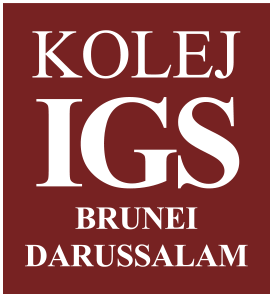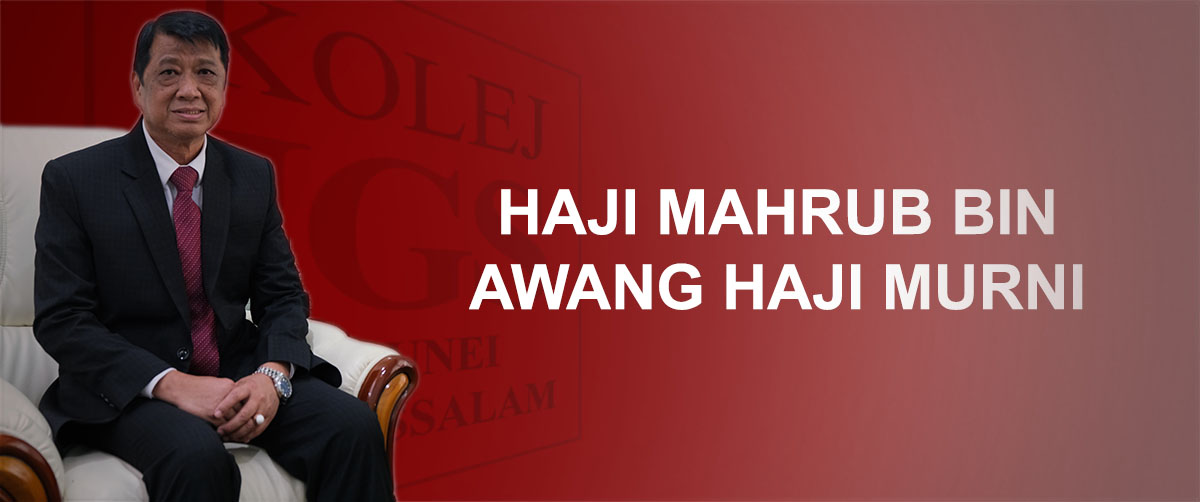The Complaints Handling Process of Kolej IGS
- Introduction
A manual on Complaints Handling Mechanism is needed by the Kolej to provide the stakeholders with a complaint resolution mechanism that is clear, flexible, fair, consistent, quick, efficient, courteous and respects confidentiality. It aims to provide guidance for filing complaints as well as for resolving complaints in the best interest of all parties involved in the conflict.
The members of the public, KIGS BOD members, parents/guardians, staff and students are encouraged to come forward with their concerns and grievances directly to the designated office for voicing complaints or indirectly through the relevant Complaints Managers or through any staff members of the Kolej.
The Kolej values the feedback given by stakeholders and it is committed to resolving their issues in the manner that the Kolej deems as appropriate and lawful through its designated office for voicing complaints. The Kolej will acknowledge the receipt of the complaints filed by the stakeholders and inform them of the resolutions taken within a reasonable time-frame.
Complaints received by the Kolej are handled through one (1) or/and two (2) processes contributing to the overall complaints handling mechanism of the Kolej, namely: the Informal Complaints Handling process and the Formal Complaints Handling process. The personnel receiving the complaints (front-liner/Complaints Manager/any staff member) should attempt informal complaints handling procedures through discussion (written or verbal) before moving into the formal complaint process (if it is appropriate to do so).
- Informal Complaints Handling Process
Diagram 1 shows the Flowchart of the Informal Complaint Handling Process. An informal process involves follow-up actions taken by the Kolej to respond to the complaint without a formal hearing so that the involved parties address and resolve an issue at the earliest stage possible without any in-depth investigation and any formal documentation/record of discussion and agreement.
The aim of an Informal Complaints Handling process is to carry out quick problem-solving rather than investigating and substantiating claims of the involved parties.
The steps of the informal complaints handling process are as follows:
Step 1. An informal complaint or enquires or opinions are presented or put forward to the Kolej by a complainant (the person making the complaint).
Step 2. The complaint is received by a complaint receiver such as front-liner personnel or a staff member or a complaints manager through face-to-face or telephone or social media or e-mail.
Diagram 1. The Flowchart of the Informal Complaints Handling Process

Step 3. On receipt of the complaint, the complaint receiver may carry out the following actions:
- carefully listen to the Complainant’s concerns and his/her outcome/s expectation;
- request for more information from the Complainant and/or from third parties if required;
- keep appropriate, confidential records of the complaint in a Complaints Register Logbook administers kept by the KIGS Secretariat for Handling Complaints (Head of Administration and Human Resource);
- refer the complaint to a more senior complaint manager or the CEO where appropriate
- make an acknowledgement to the complainant and advise him/her that the approximate time frame for him/her to receive the outcomes depending on the availability of the information required to respond to the Complainant (usually within 4 working days of receipt of the complaint)
- keep the relevant parties informed of the progress of the complaint in liaison with the Secretariat for complaints handling
Step 5. If the complaint is simple or of low risk level (e.g. problems involving miscommunication or a misunderstanding), the complaint receiver (e.g. the front-line personnel/complain manager/staff member) may resolve the complaint directly by giving an explanation/information or offering a resolution to the complainant (without the assistance of an experienced helper/s). The idea is to seek agreement and share understanding so that problems can be avoided in the future. The complaint receiver, however, may call the relevant personnel knowledgeable about the issue or a more senior manager to join him/her in having a direct talk or interview with the Complainant to explain or clarify any of the latter's misunderstanding, misgivings or worries.
If, on the other hand, the complaint is considered a high-risk, the front-line personnel/complaint manager/staff member may refer the complaint to the CEO straight away for resolutions. The Kolej CEO may decide to take up the handling of the case at this stage, if necessary, depending on the nature of the case. This is the appropriate action to do especially when the facts of the issue/problem cannot be established or when there is no policy or principle to draw on in determining the outcome so that prompt follow up actions and resolutions can be executed.
In view of the complexity of some issues, it may take a longer time for the CEO to respond especially when a detail investigation is required. In such a case, an interim response will be provided describing what is being done to deal with the issue and when the full reply is expected to be produced by the CEO. The CEO may utilise the services provided by the CHS in processing the complaint to resolve the issue. These may include communicating the outcomes of the investigation to the Complainant, performing investigation and organising meetings. If the complaint is about a negative behavior of a staff member, the CHS may carry out the following tasks:
- Talking to/discussing with the Respondent (the person about whom the complaint is made) about his/her behaviour to reach an agreement immediately to resolve the complaint and inform the Complainant about the outcome.
- Bringing the two parties together (Complainant and Respondent) to conciliate and resolve the issue without investigation.
- Organising general staff training and discussions to promote the policies associated with the complaints such as harassment or code of staff conduct. In this way, informal solutions may be found without the Respondents even know that a complaint has been made.
Step 6. When the complainant receives the result/explanation/information from the complaint receiver and he/she accepts the resolution, the Case is closed or the issue is resolved.
Step 7. If the complainant does not accept the resolution proposed in Step 6, the complaint receiver should issue the Complainant a letter directing him/her to make an appeal to the Secretariat. This advice is appropriate especially if the Complainant was dissatisfied with the initial response (complaints resolution) given by the complaint receiver/manager.
Step 8. The complainant forwards an ‘appeal’ letter (formal complaints) together with the completed Complaints Form to the Complaints Handling Secretary for the next process.
The appeal letter will be responded to by the Secretariat through the Formal Complaints Handling Process which involves in-depth investigation.
-
Formal Complaints Handling Process:
Diagram 2 shows the steps involved in the process of handling formal complaints.
The Formal Complaints Handling process involves in-depth investigating and substantive claims of the involved parties.
The steps of the process are as follows:
Step 1. A Complainant forwards a complaint or the ‘appeal’ letter to the Secretary of the CHS by putting forward reasons for not accepting the decision of the informal process and presenting new evidence/arguments for appeal. A special form (Complaints Form) for this purpose is made available by the Secretariat to be filled in by the Complainant in order to capture the specific data about the Complainant and the complaint/case in order to facilitate the investigation phase.
Step 2. The complaint receiver or the Secretary of the CHS receives the complaint or the ‘appeal’ letter to be reviewed.
Step 3. The complaint receiver, in cooperation/consultation with the CH Secretariat, will make an acknowledgement to the Complainant and inform him/her that the action would be taken within 5 days from the time of receiving the complaint/appeal letter depending on the complexities of the investigation required to be carried out.
Step 4. The Secretariat will appoint an experienced individual staff member or form a task force/committee to carry out the formal investigation to come up with an alternative resolution. It should be noted that a staff member will not be appointed in an investigation team if he/she is connected with the complaint or if such a person is inappropriate for him/her to be appointed.
Diagram 2. The Flowchart of the Formal Complaints Handling Process

The tasks of investigation may involve
- asking the Complainant clarifying questions or gathering additional evidence in support of the complaint.
- seeking verification of the complaint from independent sources who may have witnessed events or have other documentation.
- finding out whether or not the complaints/allegations/accusations did actually happened or likely to have happened
- applying natural justice principles (see the main guideline with the Secretariat) to the procedure of handling complaints
- taking disciplinary action against the Respondent
- enforcing the recommended resolution/outcome to the Respondent
- reporting of the action taken to the Complainant
- bringing the Complainant and the Respondent formally together to try to substantiate a complaint with evidence and reach an agreement.
Step 5. Prepare a written response to be submitted to the Complainant regarding the result/s or outcome/s of the investigation for review.
Step 6. Review/evaluate the resolution/ recommendations by the Secretariat.
The appointed senior staff member or the team will submit a report with recommendations to the CEO on the conclusions of the investigation. The CEO, within 7 working days from the receipt of the report, will decide whether or not the recommended actions are to be accepted or vary the actions or set the actions aside or substitute a new action before communicating the approved report to the Complainant.If a complaint can not be resolved within this time period, a formal written progress report will be provided to the Complainant until such time the case is solved. If the nature of the complaint is not related to the Kolej, the Complainant will be notified in writing that the Kolej will not take any further action on the complaint.
Step 7. The Complainant receives resolution and makes a decision. If the Complainant accepts the investigation result (complaint resolution), the case will be closed.
Step 8. If the resolution from the investigation stage is not accepted by the Complainant, he/she should make a second appeal. The Complainant should write to the Secretariat against the earlier decision within 14 days from the date of receiving the reply especially if the Complainant is able to provide new evidence or sufficient justifications for not accepting the investigation outcomes.
Step 9. The Secretariat appoints an appropriate team of a higher rank than established in Step 4 and submit a report with the recommendations to the CEO on the conclusion of their findings.
Step 10. Review the resolution/recommendations submitted by the Secretariat before communicating the results to the Complainant.
Step 11. The Complainant receives the resolution and makes a decision.
If the Complainant accepts the result (complaint resolution) of the appeal, the case will be closed. Otherwise Step 12 will be implemented.Step 12. The Complainant should write to the chairperson of the KIGS BOD Advisory, within 10 days from the date of receiving the reply from the CEO, stating the reason why the outcome provided by the CEO was unsatisfactory. The contact details of the KIGS BOD Advisory can be found on the Kolej IGS website.
Step 13. BOD Chairperson receives the appeal of the Complainant and works out the resolution using its own mechanism which may involve the services of CHS. The Chairperson of the BOD Advisory (or their nominee) will write to the Complainant within 14 working days from the receipt of the appeal letter informing him/her action that will be taken to investigate the complaint and when the outcome of the investigation is to be heard.
Step 14. BOD Chairperson communicates the outcome of the appeal to the Complainant directly or he/she can deploy the services of CHS using Step 15.
Step 15. CHS Communicates the outcomes to the Complainant (If the BOD Chairperson deploys the services of the Secretariat).
Step 16. The Complainant receives resolution of the appeal and if the resolution from the BOD Chairperson is accepted, the case will be closed.
If the Complainant raises other new allegations associated with the original issue, the case should be handled separately in order to avoid mixing up the old complaint with the new one. The process will go through Step 1.
A detail guidelines including the definitions of related terms for handling complaints is available with the Head of Administration and Human Resource.





